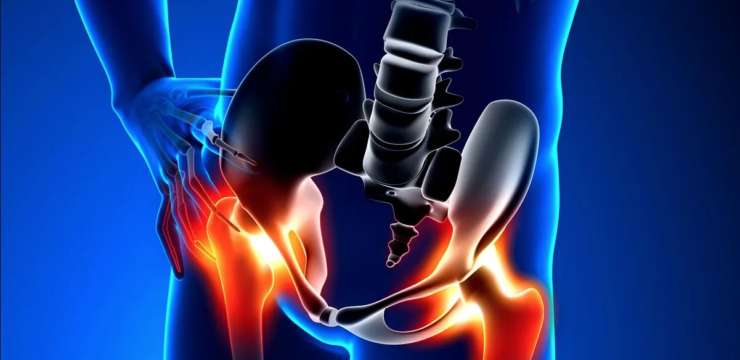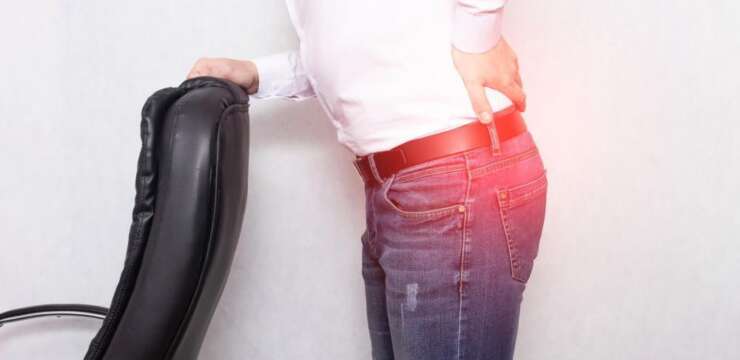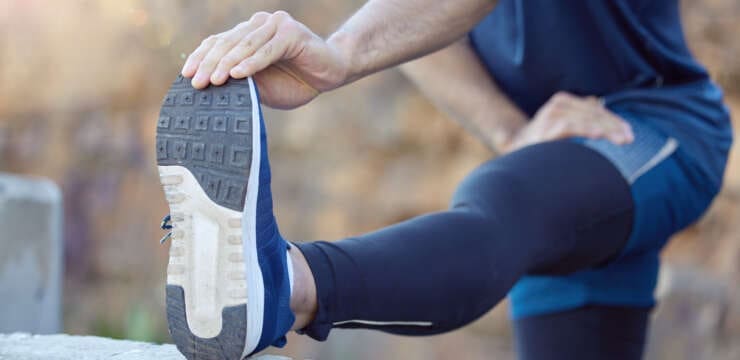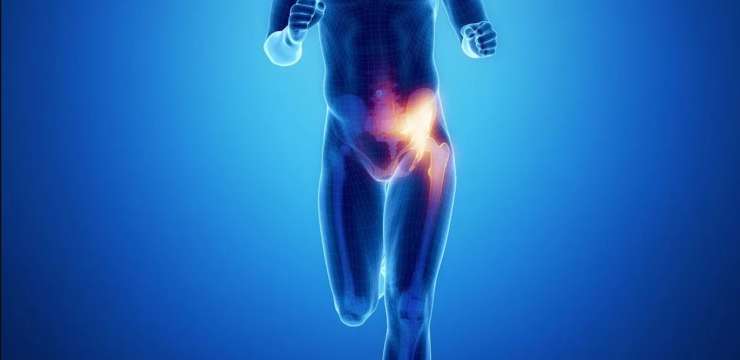
Discover how to cope with back pain stemming from motor vehicle accidents and ensure a smoother recovery process.
Table of Contents
Back Pain and Motor Vehicle Accidents: A Comprehensive Guide
Introduction
Imagine Herman Munster, the lovable giant from The Munsters, trying to stop his car with his feet, only to end up in a fender-bender that sends shockwaves through his creaky spine. While Herman’s antics might make us chuckle, the reality of back pain after a motor vehicle accident (MVA) is no laughing matter. Back pain is one of the most common complaints following MVAs, affecting millions of people each year. Whether it’s a minor rear-end collision or a more severe crash, the forces involved can leave you with lingering discomfort that impacts your daily life.
In this comprehensive guide, we’ll explore the clinical reasons why back pain is so closely linked to MVAs, the types of injuries that contribute to lumbar pain, and the symptoms you might experience. We’ll also dive into the expertise of Dr. Alexander Jimenez, a distinguished chiropractor and nurse practitioner in El Paso, Texas, who specializes in treating MVA-related injuries. Additionally, we’ll highlight the importance of personal injury cases in El Paso and how Dr. Jimenez serves as a vital link between medical care and legal documentation. So, let’s hit the road (safely!) and uncover the connection between MVAs and back pain.
Section 1: The Clinical Rationale for Back Pain After MVAs
Motor vehicle accidents subject the body to sudden and forceful movements that can cause significant damage to the spine and surrounding tissues. The spine, a complex structure of bones, muscles, ligaments, tendons, and nerves, is particularly vulnerable to these forces. According to a systematic review, individuals involved in MVAs have a 2.7 times higher risk of developing low back pain (LBP), with 63% of chronic LBP cases in accident victims likely caused by the collision (Nolet et al., 2020). This strong association underscores why back pain is such a common outcome of MVAs.
Why Does This Happen?
The mechanics of a car accident explain much of the problem. When a vehicle is involved in a collision, the occupants experience rapid acceleration, deceleration, or rotational forces. These movements can cause the spine to exceed its normal range of motion, potentially leading to injuries. Here’s a closer look at the key factors:
- Whiplash and Spinal Stress: In a rear-end collision, the head and neck are thrown forward and then back, a motion known as whiplash. While whiplash is often associated with neck pain, it can also affect the upper and lower back, especially if the force causes spinal misalignment or disc injury. Picture Herman Munster’s head bobbing like a bobblehead in a crash—his back would feel the jolt too!
- Seatbelt Forces: Seatbelts save lives, but they can also contribute to back injuries. During a collision, the seatbelt restrains the lower body while the upper body may lurch forward, creating a flexion-distraction injury. This can lead to a Chance fracture, where the vertebrae are pulled apart and potentially break.
- Vibration and Posture: Long-term exposure to driving, especially with poor seat adjustments, can exacerbate back issues. Research shows that the lumbar spine’s natural resonant frequency (4-5 Hz) can be excited by vehicle vibrations, leading to increased spinal loading and a higher risk of injury (El Paso Back Clinic, 2025).
- Delayed Onset of Pain: One tricky aspect of MVA-related back pain is that it may not appear immediately. Inflammation and swelling can take days or weeks to develop, making it critical to seek medical attention even if you feel fine right after an accident.
These factors highlight why back pain is a frequent consequence of MVAs and why prompt evaluation is essential.
References
- Nolet, P. S., Emary, P. C., Kristman, V. L., Murnaghan, K., Zeegers, M. P., & Freeman, M. D. (2020). Exposure to a motor vehicle collision and the risk of future back pain: A systematic review and meta-analysis. Accident Analysis & Prevention, 135, 105546. Accident Analysis & Prevention
- El Paso Back Clinic. (2025). Dr. Jimenez Injury Rehabilitation: Effective MVA Care. Retrieved from El Paso Back Clinic
Section 2: Role of Injuries in Developing Lumbar Pain
MVAs can cause a range of injuries that contribute to lumbar pain, from minor soft tissue damage to severe fractures. Below, we outline the most common injuries and their relationship to back pain.
1. Soft Tissue Injuries
- Description: Soft tissue injuries, such as strains (affecting muscles or tendons) and sprains (affecting ligaments), are the most common MVA-related back injuries. They occur when tissues are stretched or torn due to sudden forces.
- Impact on Lumbar Pain: These injuries cause inflammation, swelling, and muscle spasms, leading to localized pain and stiffness. If left untreated, they can lead to chronic pain or reduced mobility.
- Humor Note: Think of Herman Munster trying to dance after a crash—his muscles would be as stiff as his Frankenstein-like joints!
2. Lumbar Fractures
- Description: Fractures in the lower back, such as Chance fractures, occur when the spine is subjected to flexion-distraction forces, often from seatbelt restraint during a collision.
- Impact on Lumbar Pain: Fractures cause moderate to severe pain, especially with movement. If the spinal cord or nerves are affected, symptoms may include numbness, tingling, or weakness in the legs.
- Humor Note: Imagine Herman’s spine creaking like an old door after a seatbelt yanks him back—ouch!
3. Bulging or Herniated Discs
- Description: Discs, the cushions between vertebrae, can bulge or rupture due to the force of a collision, pressing on nerves or the spinal cord.
- Impact on Lumbar Pain: These injuries can cause sharp, radiating pain (sciatica), numbness, or weakness in the affected area. In rare cases, severe disc injuries may lead to bowel or bladder dysfunction, requiring immediate attention.
- Humor Note: Picture Herman sitting on a whoopee cushion that’s a herniated disc—no laughs here, just pain!
4. Ligament Injuries
- Description: Ligaments, which stabilize the spine, can be stretched or torn during an MVA, leading to instability and pain.
- Impact on Lumbar Pain: Injured ligaments heal with scar tissue that is weaker and less elastic, contributing to chronic pain and reduced spinal stability.
These injuries highlight the diverse ways MVAs can damage the spine, each contributing to lumbar pain in unique ways.
References
- Healthline. (2023). Low Back Pain After Car Accident: What You Need to Know. Retrieved from Healthline
Section 3: Symptoms Associated with Auto Injuries
The symptoms of back pain from MVAs depend on the injury type and severity. Below is a table summarizing common symptoms:
| Injury Type | Common Symptoms |
|---|---|
| Soft Tissue Injuries | Localized pain, muscle spasms, stiffness, swelling, weakness, bruising |
| Lumbar Fractures | Moderate to severe pain, numbness/tingling, limb weakness, bowel/bladder issues |
| Bulging/Herniated Discs | Radiating pain (sciatica), numbness, weakness, and rare loss of bladder control |
| Ligament Injuries | Pain, instability, reduced range of motion |
- Delayed Symptoms: Pain may not appear immediately, as inflammation can take time to develop. This makes a medical evaluation critical, even if you feel fine after the accident.
- Severe Symptoms: Symptoms like loss of bladder control or severe weakness require immediate medical attention, as they may indicate serious conditions like cauda equina syndrome.
Here are some common symptoms to watch for:
- Localized Pain: Pain in the back or neck, often worsening with movement.
- Radiating Pain: Pain that travels down the arms or legs, often due to nerve compression, such as sciatica from a herniated disc.
- Stiffness: Limited range of motion in the back or neck, making it hard to bend or turn.
- Muscle Spasms: Involuntary muscle contractions that can be painful and restrict movement.
- Numbness or Tingling: Often felt in the arms or legs, indicating possible nerve damage.
- Weakness: Reduced strength in the limbs, which can affect daily activities like walking or lifting.
- Bowel or Bladder Dysfunction: In severe cases, such as with spinal cord injuries, this is a medical emergency requiring immediate attention.
It’s critical to note that symptoms may not appear immediately after the accident. Delayed onset of pain is common, so even if you feel fine right after a collision, seeking medical attention is essential to rule out serious injuries. As Herman Munster might say, “Gee, Lily, my back’s creaking worse than Grandpa’s coffin!”
References
- Healthline. (2023). Low Back Pain After Car Accident: What You Need to Know. Retrieved from Healthline
The Non-Surgical Approach To Wellness With Chiropractic Care- Video
Section 4: Correlation Between Back Pain and Auto Injuries
The link between back pain and MVAs is well-documented. A population-based cohort study found that 31% of individuals involved in MVAs reported low back pain one year after the crash (Nolet et al., 2018). Another study noted that structural issues, such as disc injuries, are common in chronic low back pain following MVAs (DePalma et al., 2011). Additionally, research indicates that 50% of drivers in the USA and Sweden report low back pain, with long-term vibration exposure from driving being a significant risk factor (El Paso Back Clinic, 2025).
These findings suggest that MVAs not only cause immediate injuries but also increase the risk of chronic pain. Factors like poor seat adjustment or prolonged driving can exacerbate the issue, as they contribute to spinal stress over time. For example, a survey of over 1,400 urban transportation drivers showed that improper seat adjustments significantly increased the prevalence of low back problems.
References
- Nolet, P. S., Kristman, V. L., Côté, P., Carroll, L. J., & Cassidy, J. D. (2018). The association between a lifetime history of low back injury in a motor vehicle collision and future low back pain: A population-based cohort study. European Spine Journal, 27(1), 136-144. European Spine Journal
- DePalma, M. J., Ketchum, J. M., Saullo, T., & Schofferman, J. (2011). Structural etiology of chronic low back pain due to motor vehicle collision. Pain Medicine, 12(11), 1622-1627. Pain Medicine
- El Paso Back Clinic. (2025). Dr. Jimenez Injury Rehabilitation: Effective MVA Care. Retrieved from El Paso Back Clinic
Section 5: Dr. Alexander Jimenez’s Insights and Approach
Dr. Alexander Jimenez, DC, APRN, FNP-BC, is a leading figure in El Paso, Texas, with over 25 years of experience treating MVA-related injuries. His integrative approach combines chiropractic care, functional medicine, and advanced diagnostics to effectively address back pain. Here’s how he tackles MVA-related back pain:
Diagnostic Assessments
Dr. Jimenez uses state-of-the-art tools to pinpoint the cause of back pain:
- X-rays: To detect fractures, dislocations, or spinal misalignments.
- MRIs: To identify soft tissue injuries, such as disc herniations or nerve compression.
- Neurological Evaluations: To assess nerve damage, such as radiculopathy or peripheral neuropathy.
These diagnostics ensure that treatment is tailored to the specific injury, avoiding a one-size-fits-all approach. As Dr. Jimenez puts it, “We don’t just crack backs like Herman Munster cracks jokes; we use science to get to the root of the problem.”
Treatment Protocols
Dr. Jimenez’s treatment plans are comprehensive and personalized:
- Chiropractic Adjustments: To correct spinal misalignments and restore mobility.
- Physical Therapy Modalities: Techniques such as ultrasound and electrical stimulation help reduce pain and inflammation.
- Functional Strength Training: Exercises to strengthen muscles and improve flexibility, supporting long-term recovery.
- Nutritional Guidance: Addressing inflammation and metabolic imbalances to prevent chronic pain.
Preventing Long-Term Complications
Dr. Jimenez emphasizes holistic care to reduce the risk of long-term issues like post-traumatic arthritis. By combining physical therapy with lifestyle and nutritional advice, he helps patients achieve lasting relief.
References
- El Paso Back Clinic. (2025). Dr. Jimenez Injury Rehabilitation: Effective MVA Care. Retrieved from El Paso Back Clinic
Section 6: Importance of Personal Injury Cases in El Paso
In El Paso, Texas, motor vehicle accidents are a significant cause of personal injuries, and seeking proper medical care is crucial for both recovery and legal purposes. Personal injury cases ensure that victims receive compensation for medical expenses, lost wages, and the pain and suffering they experience. However, these cases require detailed medical documentation to succeed.
Dr. Alexander Jimenez plays a pivotal role in this process. His expertise allows him to provide thorough assessments and treatment plans that are admissible in legal proceedings. He works closely with automobile injury lawyers to accurately document injuries, ensuring that patients receive the compensation they deserve. His dual licensure as a chiropractor and nurse practitioner gives him unique insights into both medical and legal aspects, making him a trusted liaison for MVA victims in El Paso.
References
- El Paso Back Clinic. (2025). Chiropractic Auto Accidents and Injuries. Retrieved from El Paso Back Clinic
Section 7: Conclusion
Back pain after a motor vehicle accident is a serious issue that can significantly impact your quality of life. The sudden forces of a collision can cause a range of injuries, from soft tissue damage to herniated discs, leading to symptoms that may persist if untreated. Dr. Alexander Jimenez, with his integrative approach and advanced diagnostics, offers hope for accident victims in El Paso, Texas. His ability to combine chiropractic care, physical therapy, and legal documentation makes him a vital resource for those navigating personal injury cases.
If you’ve been in an MVA and are experiencing back pain, don’t wait to seek help. Early intervention can prevent chronic pain and improve your recovery. Consult a qualified healthcare provider, such as Dr. Jimenez, to ensure you receive the care you need.
Disclaimer
This blog post is for informational purposes only and should not be taken as medical advice. Always consult with a qualified healthcare professional for diagnosis and treatment of any medical condition.
Key Citations
- Exposure to a motor vehicle collision and the risk of future back pain: A systematic review and meta-analysis Accident Analysis & Prevention
- The association between a lifetime history of low back injury in a motor vehicle collision and future low back pain: A population-based cohort study European Spine Journal
- Structural etiology of chronic low back pain due to motor vehicle collision Pain Medicine
- Low Back Pain After Car Accident: What You Need to Know Healthline
- Dr. Jimenez Injury Rehabilitation: Effective MVA Care El Paso Back Clinic
- Chiropractic Auto Accidents and Injuries El Paso Back Clinic
Disclaimers
Professional Scope of Practice *
The information herein on "Back Pain: Seeking Help After A Motor Vehicle Accident" is not intended to replace a one-on-one relationship with a qualified health care professional or licensed physician and is not medical advice. We encourage you to make healthcare decisions based on your research and partnership with a qualified healthcare professional.
Blog Information & Scope Discussions
Welcome to El Paso's wellness blog, where Dr. Alex Jimenez, DC, FNP-C, a board-certified Family Practice Nurse Practitioner (FNP-C) and Chiropractor (DC), presents insights on how our team is dedicated to holistic healing and personalized care. Our practice aligns with evidence-based treatment protocols inspired by integrative medicine principles, similar to those found on dralexjimenez.com, focusing on restoring health naturally for patients of all ages.
Our areas of chiropractic practice include Wellness & Nutrition, Chronic Pain, Personal Injury, Auto Accident Care, Work Injuries, Back Injury, Low Back Pain, Neck Pain, Migraine Headaches, Sports Injuries, Severe Sciatica, Scoliosis, Complex Herniated Discs, Fibromyalgia, Chronic Pain, Complex Injuries, Stress Management, Functional Medicine Treatments, and in-scope care protocols.
Our information scope is limited to chiropractic, musculoskeletal, physical medicine, wellness, contributing etiological viscerosomatic disturbances within clinical presentations, associated somato-visceral reflex clinical dynamics, subluxation complexes, sensitive health issues, and functional medicine articles, topics, and discussions.
We provide and present clinical collaboration with specialists from various disciplines. Each specialist is governed by their professional scope of practice and their jurisdiction of licensure. We use functional health & wellness protocols to treat and support care for the injuries or disorders of the musculoskeletal system.
Our videos, posts, topics, subjects, and insights cover clinical matters, issues, and topics that relate to and directly or indirectly support our clinical scope of practice.*
Our office has reasonably attempted to provide supportive citations and has identified the relevant research studies or studies supporting our posts. We provide copies of supporting research studies available to regulatory boards and the public upon request.
We understand that we cover matters that require an additional explanation of how they may assist in a particular care plan or treatment protocol; therefore, to discuss the subject matter above further, please feel free to ask Dr. Alex Jimenez, DC, APRN, FNP-BC, or contact us at 915-850-0900.
We are here to help you and your family.
Blessings
Dr. Alex Jimenez DC, MSACP, APRN, FNP-BC*, CCST, IFMCP, CFMP, ATN
email: coach@elpasofunctionalmedicine.com
Licensed as a Doctor of Chiropractic (DC) in Texas & New Mexico*
Texas DC License # TX5807
New Mexico DC License # NM-DC2182
Licensed as a Registered Nurse (RN*) in Texas & Multistate
Texas RN License # 1191402
ANCC FNP-BC: Board Certified Nurse Practitioner*
Compact Status: Multi-State License: Authorized to Practice in 40 States*
Graduate with Honors: ICHS: MSN-FNP (Family Nurse Practitioner Program)
Degree Granted. Master's in Family Practice MSN Diploma (Cum Laude)
Dr. Alex Jimenez, DC, APRN, FNP-BC*, CFMP, IFMCP, ATN, CCST
My Digital Business Card






